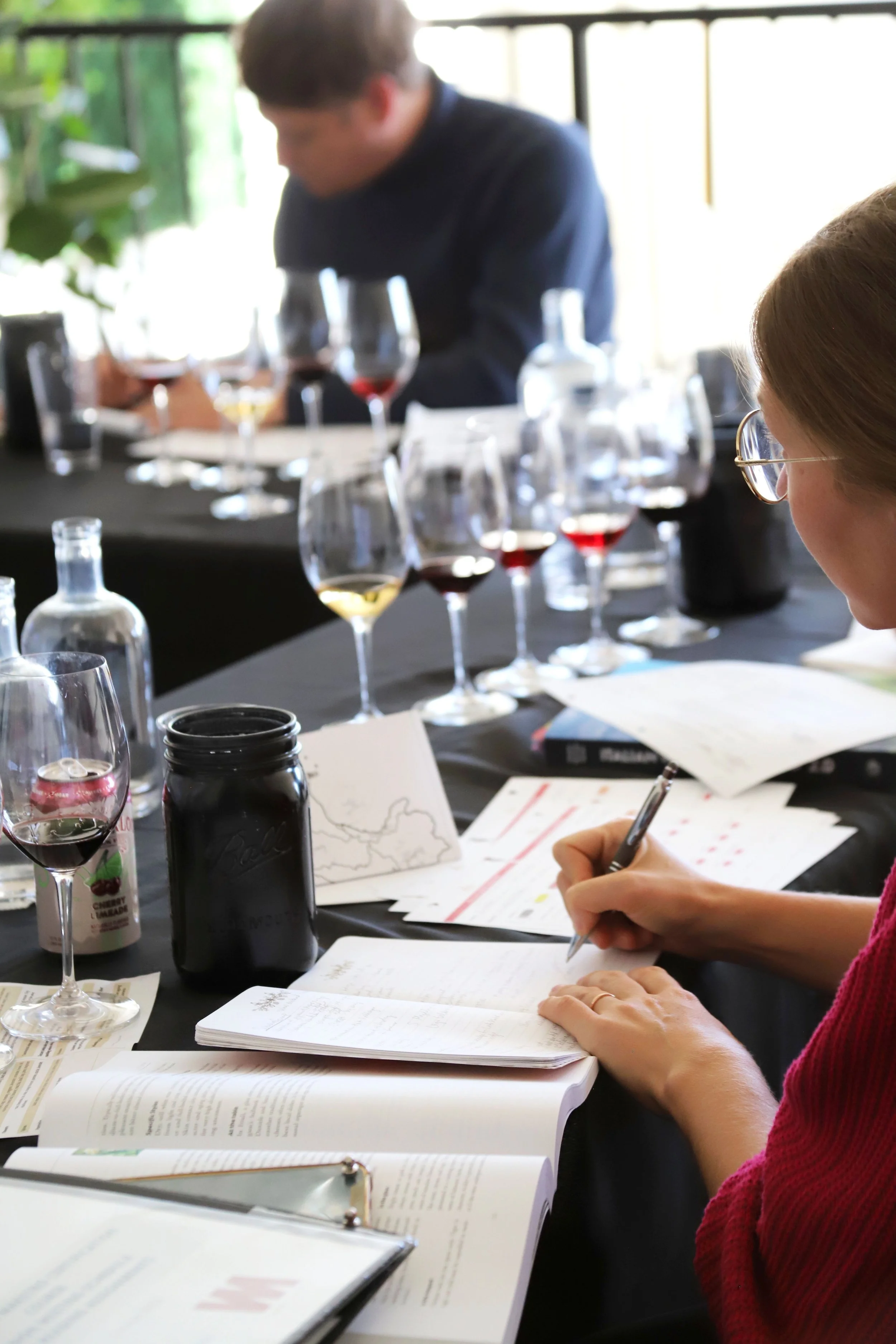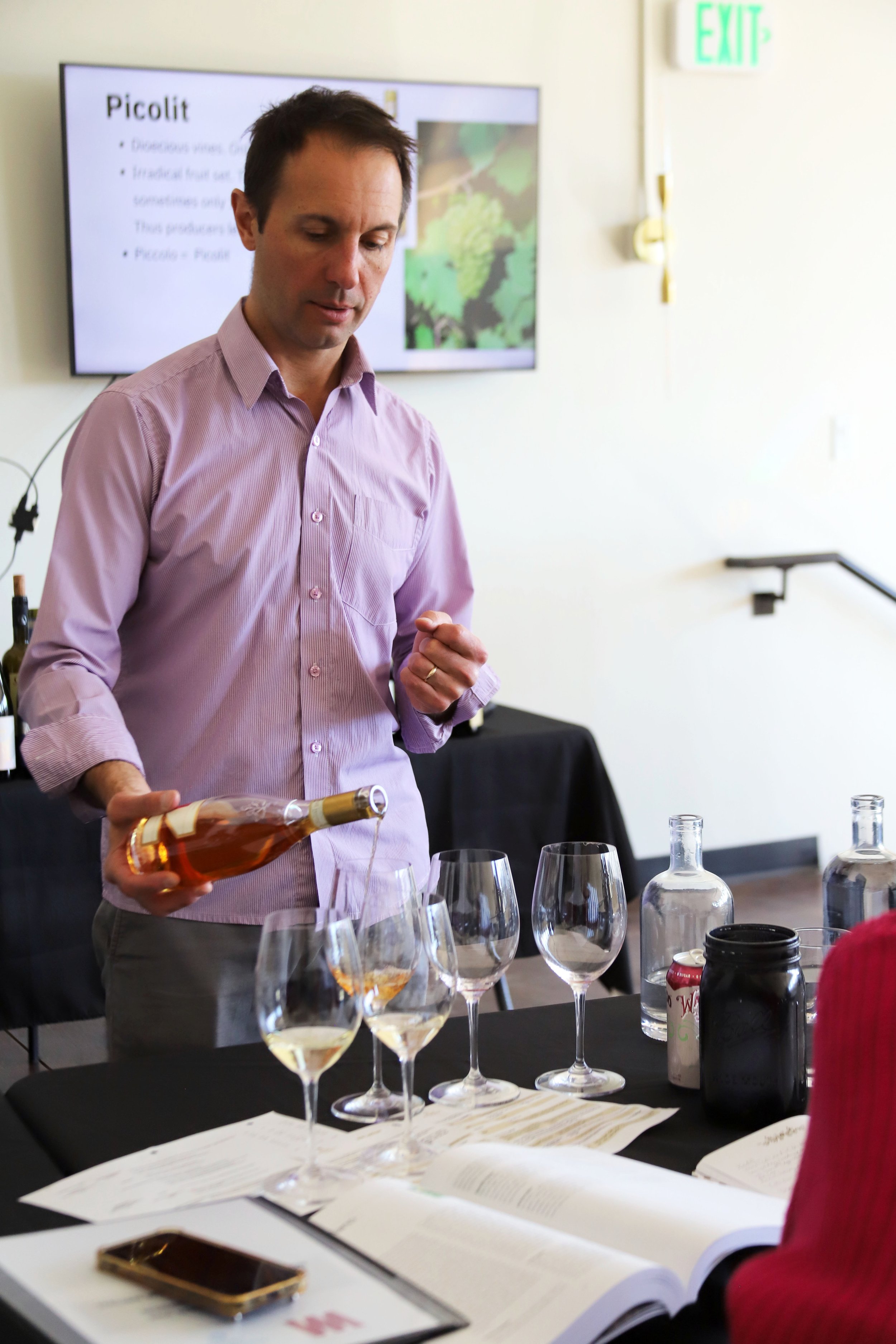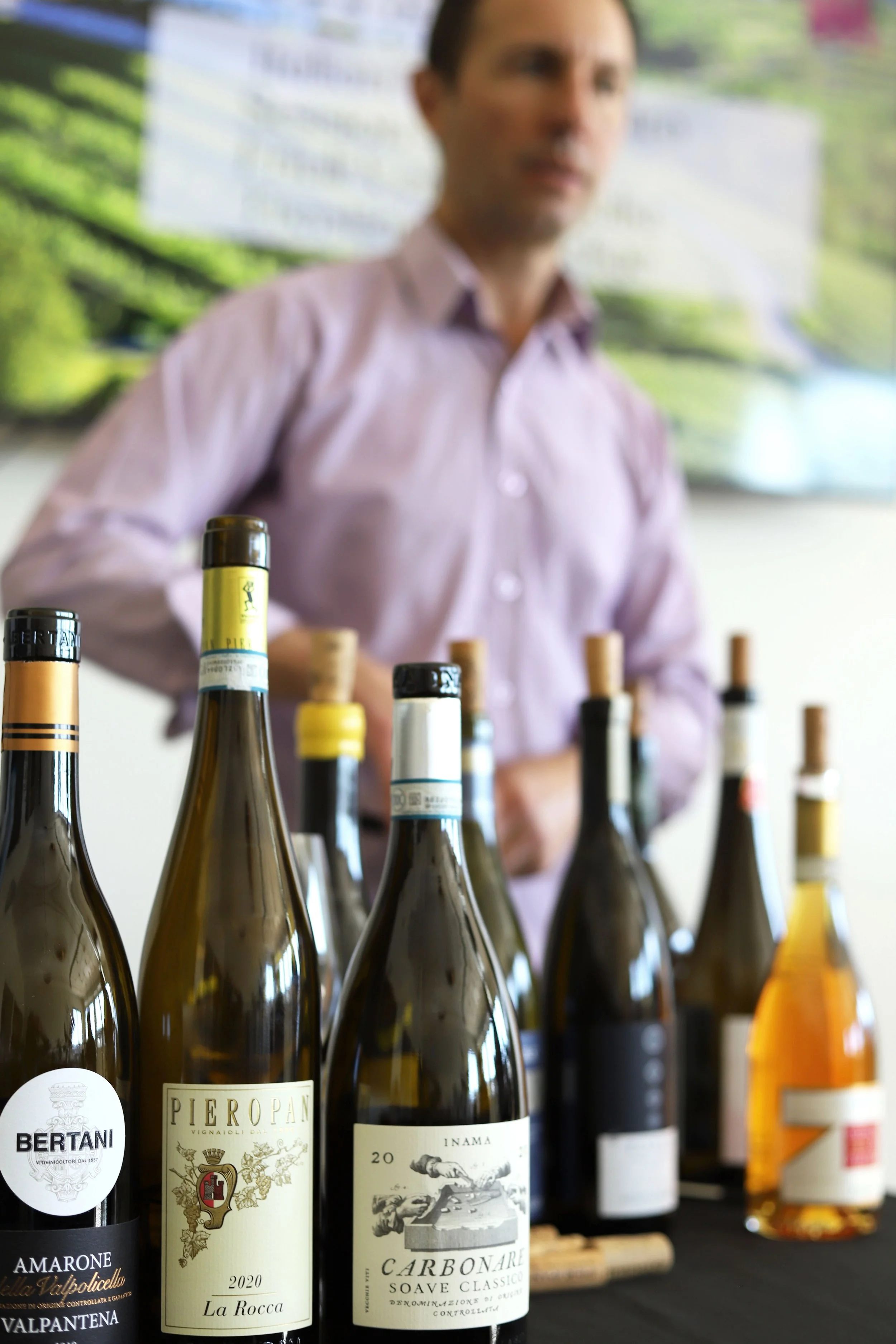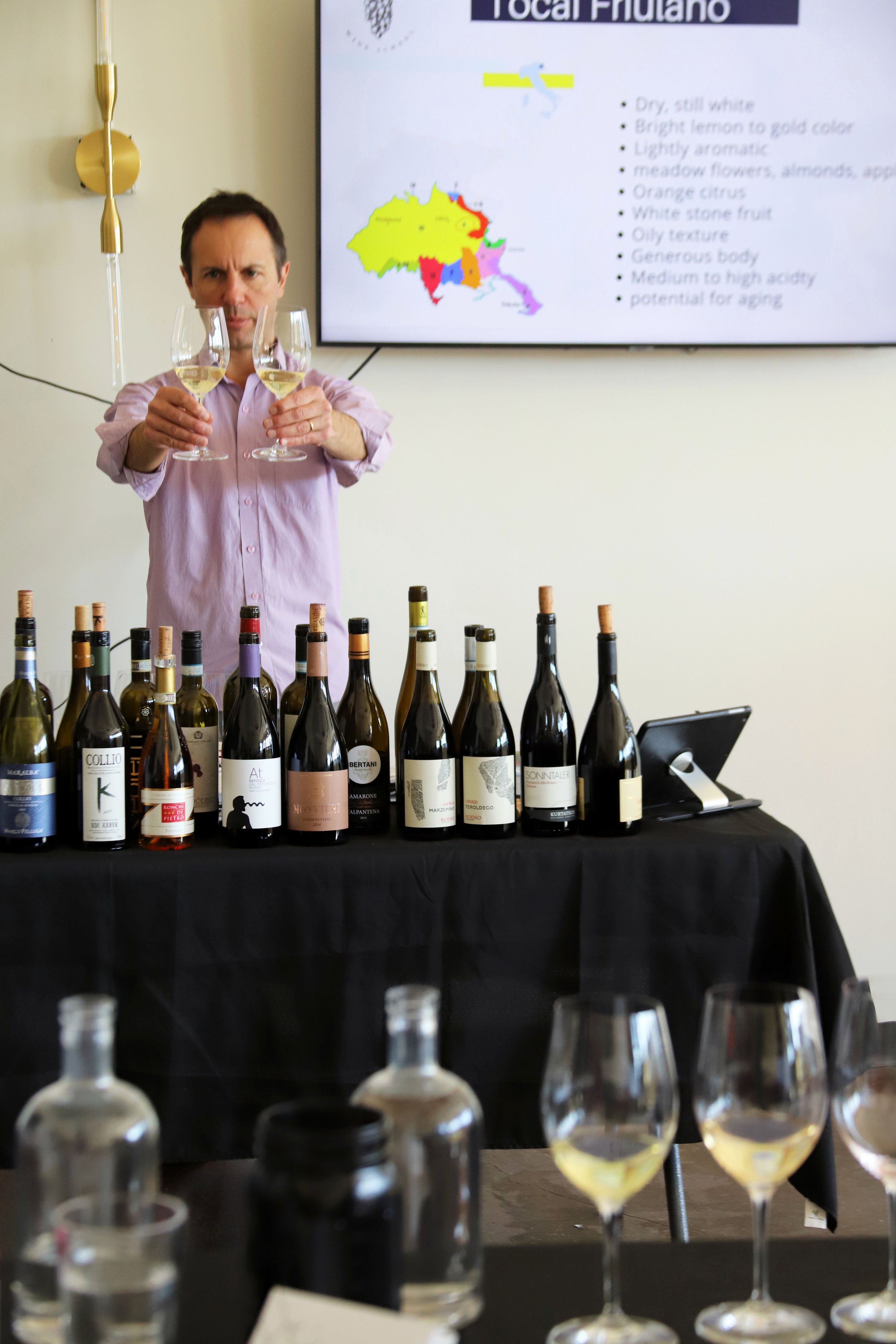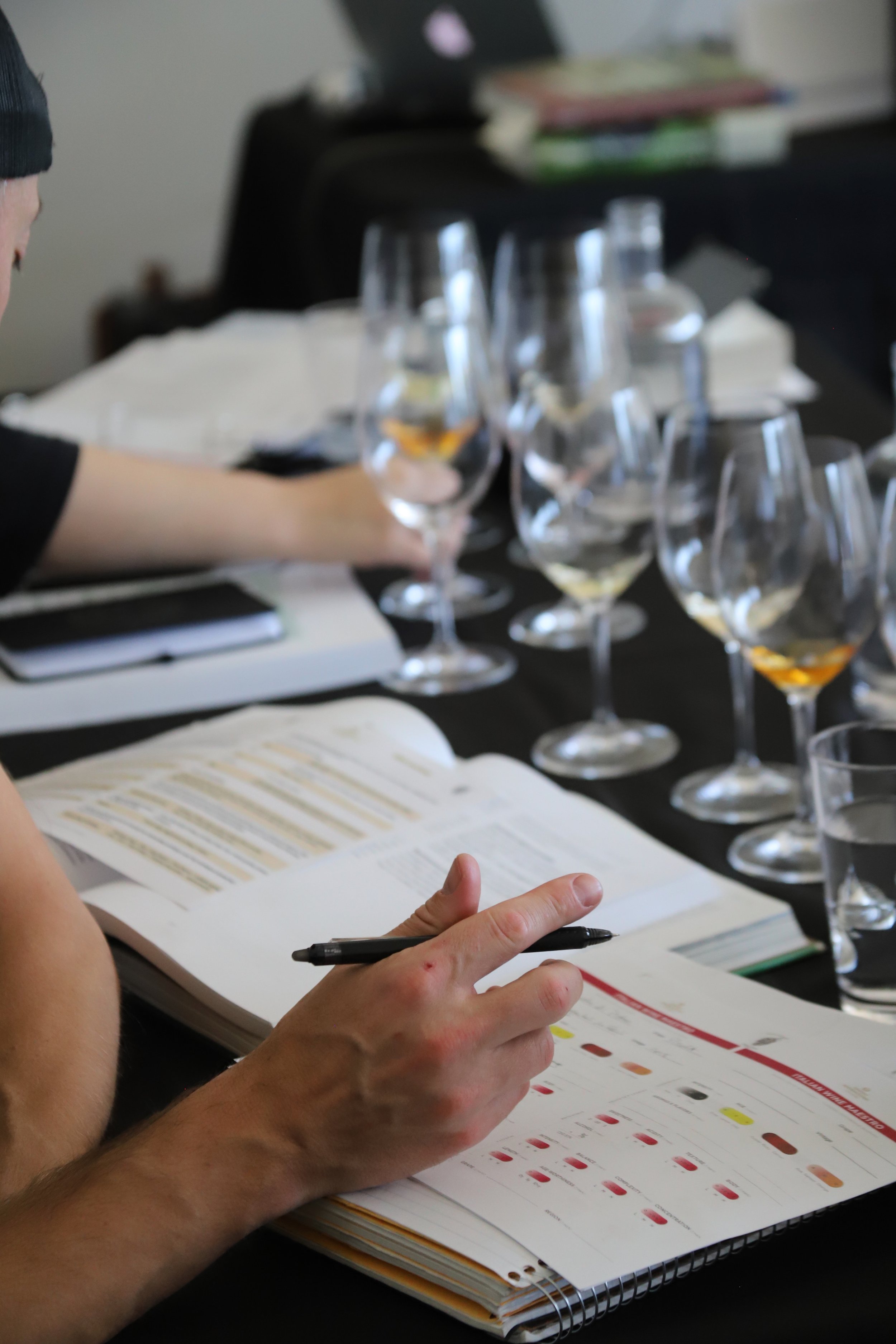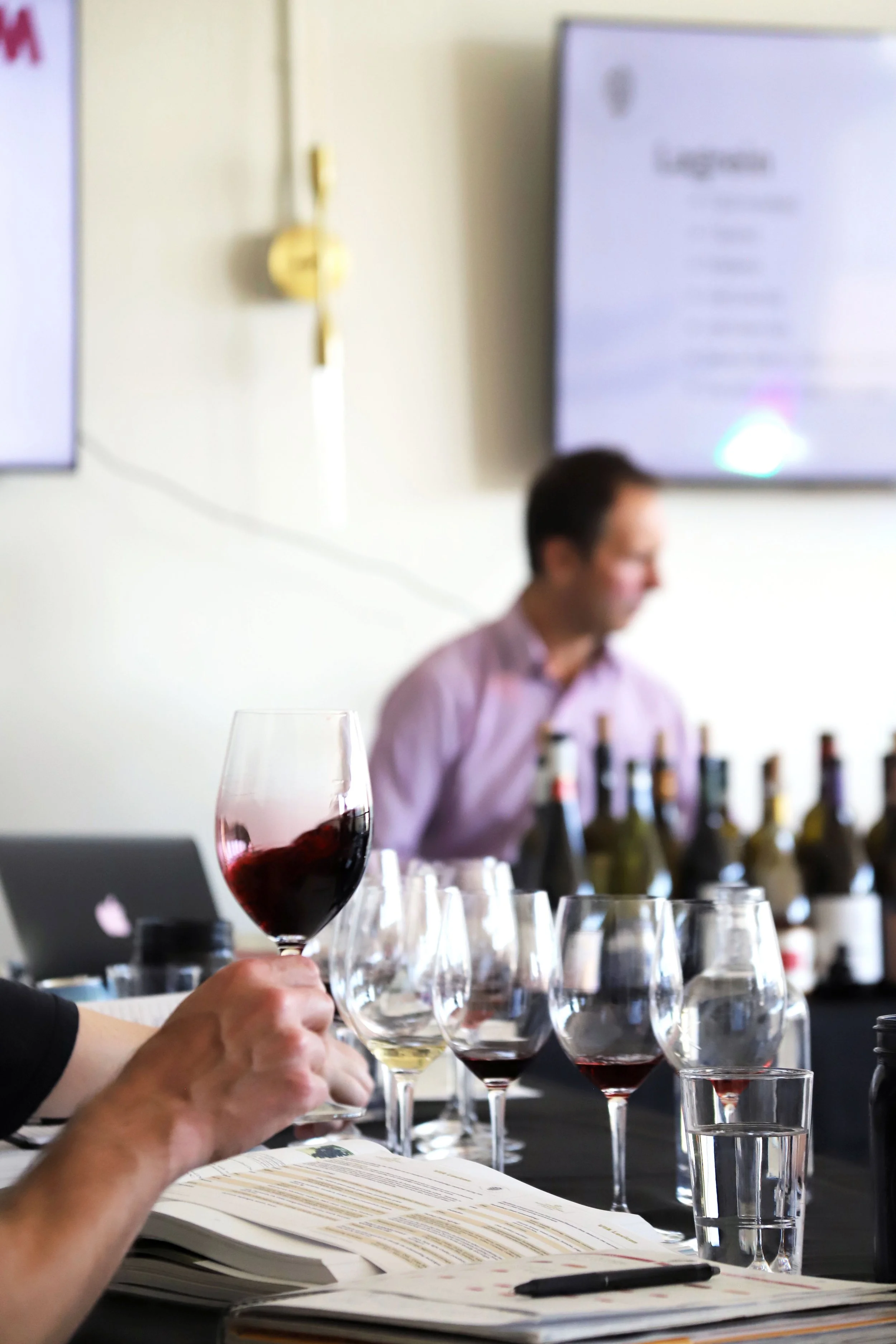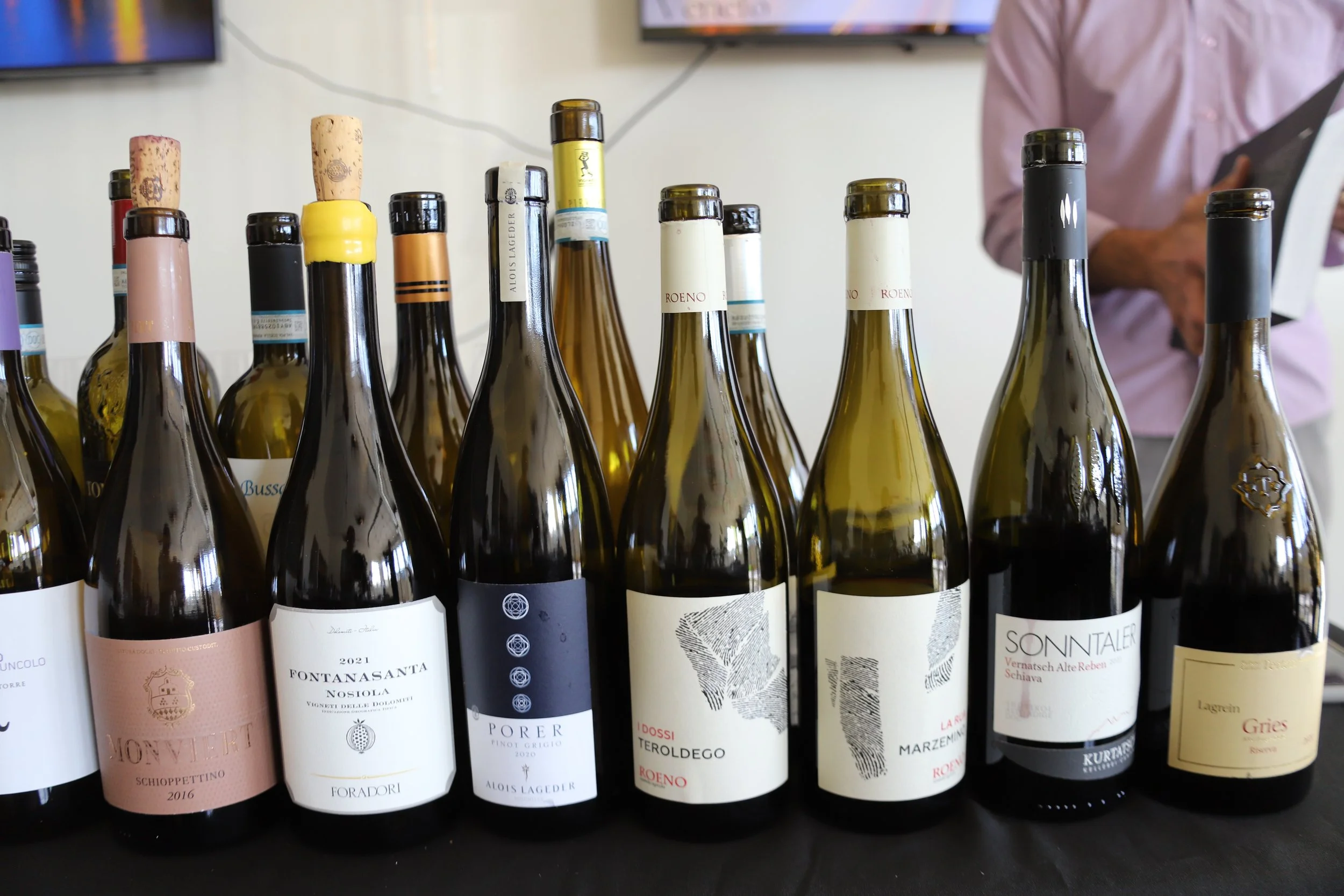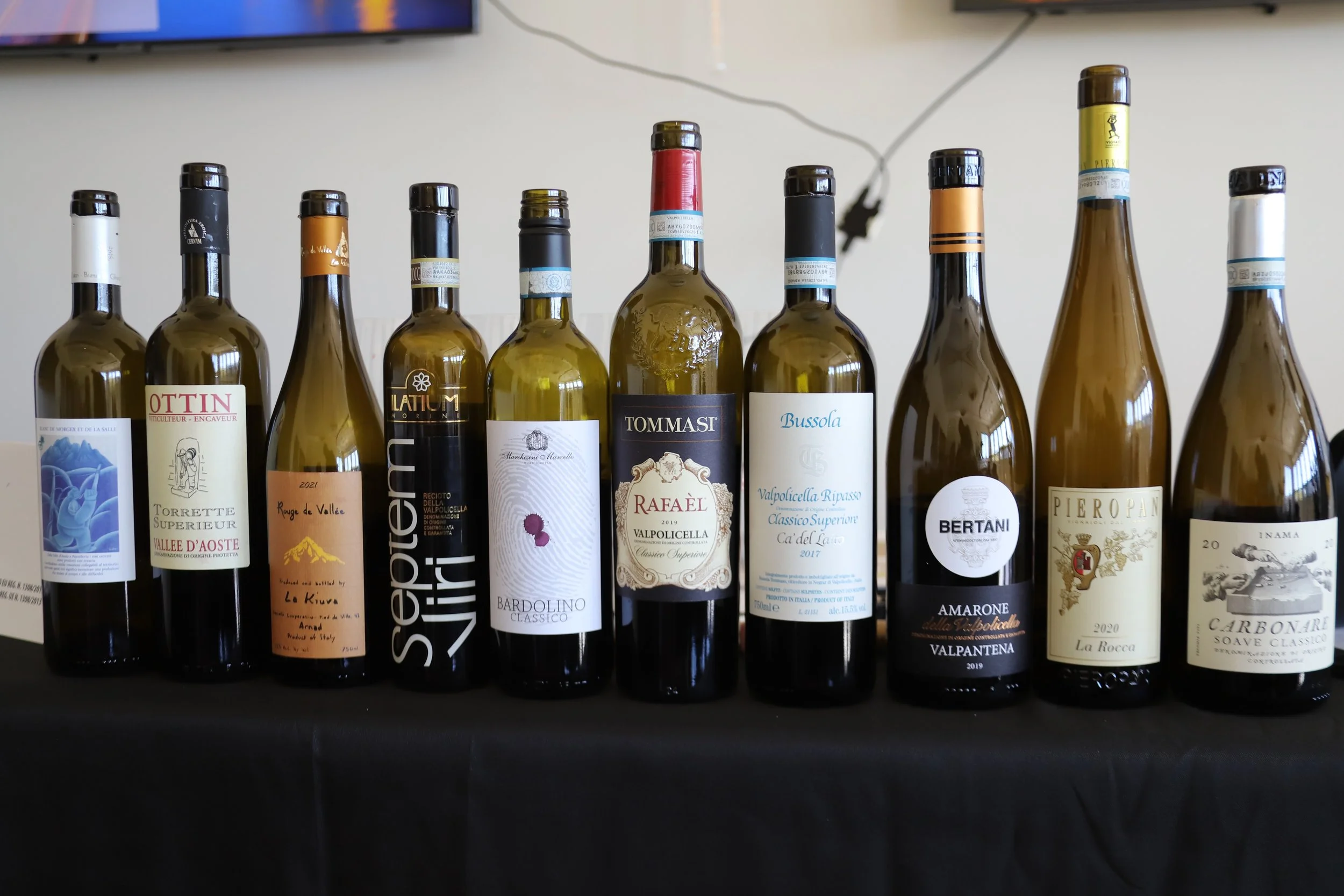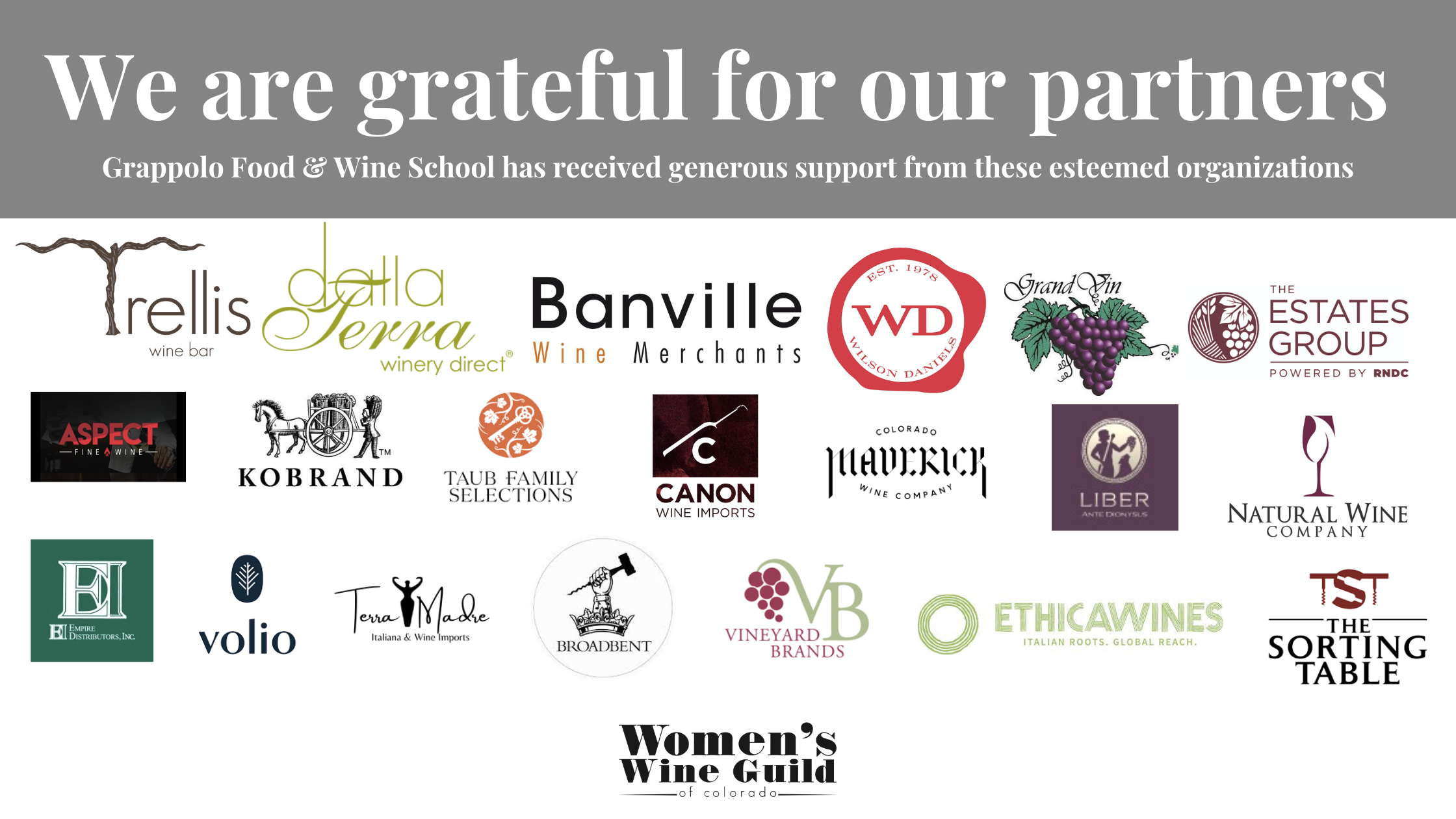Italian Wine Maestro Denver
Our Italian Wine Maestro course in fall was a big success! And our Winter course is scheduled to start on February 18.
We are really thrilled to offer this in-person course to our Colorado wine community and to introduce this 201-level Vinitaly International Academy curriculum to passionate Italian wine students. So far, we’ve had 27 students run through the course with a pass rate of 95%. It’s a lot of material to cover which demonstrates that everyone who has recieved a pin has certainly put in the work to obtain the 75% passing grade. Bravissimi studenti!! We couldn’t be prouder of your accomplishments.
Last check: of the 40 Vinitaly International certified educators, only 10 of us reside in the US. Of those 10, only 3 of us are active in offering this course, thus it’s a unique experience and helps pave the way to the next level which is the grueling, Italian Wine Ambassador certification. Reflecting back on my journey as an Italian Wine Ambassador, I wish I had this course before undertaking the venture to Verona.
The curriculum is lined up so the primary focus is on grapes and not necessarily solely on DOCs like many other courses. This allows us to dissect each native grape variety one by one while discussing characteristics, sign post structure/aromas/flavors, and terroir diversity. In the end, we will have tasted over 100 wines together. Wow.
Learn more and register for our upcoming Italian Wine Maestro course starting February 18.
HERE IS A RECAP FROM OUR FALL CLASS.
The first week is filled with foundational knowledge about grape groups vs grape families; metodo classico and Martinotti method bollicine - Franciacorta, Trentodoc, Alta Langa; and the various styles of prosecco.
Session two is a big one...the native grapes of Piemonte. White grapes: Timorasso, Erbaluce, Nascetta, Arneis, Moscato, and Cortese. Red grapes: Ruche, Dolcetto, Barbera, Freisa, and Grignolino. Of course, this is the time we compare and contrast the regions and styles of Nebbiolo, from the Langhe, Alto Piemonte, and up to Valtellina.
Week 2 of our Italian Wine Maestro course is one of my favorites.
Valleé d'Aosta boasts some of the most unique and undiscovered varieties in Italy. We taste and cover Prié Blanc, Petit Rouge, Fumin, and Picotendro (aka Nebbiolo). Discussing the challenges and advantages of heroic viticulture with rocks that retain heat and low-trained pergolas.
Then onto the Veneto. It’s the complete opposite as far as annual production compared to Vallee d'Aosta. Our focus is on Garganega and the various styles. Volcanic soils vs. limestone, and hills vs. the valley floor. Corvina and all the bird grapes allow for a big discussion (+ Molinara, not a bird grape obviously) and what they bring to Valpolicella blends. From Classico Superiore, Ripasso, Amarone, and Recioto, there's no "one" style of Valpolicella.
Then we head east to Friuli Venezia Giulia. So many native grapes here. The emblematic Friulano, the many shades of Ribolla Gialla, sweet Picolit, and the reds...Refosco dal Peduncolo Rosso, Pignolo, and Schioppetino. There's no question why FVG is regarded so highly.
Lastly, to the autonomous region of Trentino Alto Adige. In the north surrounding Bolzano: the muscular Lagrein next to the elegant Schiava. In and around Trento: Noisiola, Teroldigo, Marzemino, and beautiful expressions of Pinot Grigio. It's like we are talking about two countries here with completely different cultures and languages.
Week 3 is another fun week covering central Italy and the Adriatic coast.
Many of the grapes here are familiar on the wine scene, but there are a slew of under-the-radar varieties that are only grown in their respective zones.
We start in Liguria where the mountains fall into the sea. We discuss the red grapes Rossesse and Ormeasco (aka Dolcetto) from the Ponente side, and Bosco, from the opposite Levante..." a red grape in white clothing" contributing to the super rare Sciacchetrà of Cinque Terre.
Over the Appenine we go to Emilia Romagna. In Emilia, north of Bologna, the focus is on i Lambruschi, whereas in Romagna, it's all about Sangiovese and Albana...another tannic white that ranges from sweet to dry (also Italy's first white DOCG).
Tuscany is synonymous with Sangiovese.. from its uber-lean style in the high hills of Chianti Classico to the warm and robust Montalcino area, there is not one predictable style of Sangiovese, especially when there are blending partners like all the Bordeaux varieties and native grapes like Canaiolo Nero, Colorino, Mammolo, Cigliegio, and Malvasia Nera.
We travel east to Italy's beautiful Umbria where the tannic red Sagrantino reins supreme complimented by white grapes Grechetto (both Todi and Orvieto) as well as Trebbiano Toscano (aka as Procanico).
Le Marche..a special region featuring the eponymous "green grape" Verdicchio. We discuss the differences between the coastal-influenced Jesi versus the mountainous Matelica (the latter being more structured). And Lacrima, an aromatic red grape with deep purple hues.
Abruzzo...oh Abruzzo. Pecorino, Montepulciano, Trebbiano Abruzzesse (yes it's different from the Toscano kind), and one of Italy's great Rosati...Cerasuolo. We showcase one producer that perfectly sums up the region @cristianatiberio
Then south to Puglia boasting 800 miles of coastline and many native grapes...Nero di Troia with elegance and grace..and Primitivo and Negroamaro with heft and grip.
Every week we go in-depth on theory, taste together, assess, discuss, and work through the tasting grid. No better way to reinforce theory knowledge than to couple it with tasting.
Week 4 of our Vinitaly International Academy Italian Wine Maestro Course brings our 24 hours of classroom sessions to an end. A joyous day filled with conviviality and rich conversations. A big shoutout to this group of hard-studying, dedicated students who have embarked on this Italian Wine journey with us. By the end of this session, we have tasted over 90 wines from all twenty regions of Italy. Some varieties are familiar, but the most impressive aspect of this course is the emphasis on native grapes with a particular focus on their classic regional character.
Beginning with Malvasia...a large subject with over 17 named Malvasia in Italy alone. Istriana, Bianca Lunga, del Lazio, and di Candia just to name a few of the important ones. This segways nicely into one of the more important Malvasia regions: Lazio. Here we taste and discuss the two red Cesanese.
Going south to Campania. From the coast to the inland hills we cover the important white grapes of Fiano, Greco, and Falanghina and all their unique character + the ever-important Aglianico with three biotypes from Taurasi, Taburno, and Vulture (the latter from Basilicata).
Calabria's important Gagliopo (meaning beautiful foot in Greek) sums up the tip of the boot.
Sicily next from tip to tip. Etna's Carricante, Nerello Mascalese, and Nerello Capuccio could be an entire day discussing the various sides of Mongibello and the character of wines from each. Moving west...Calabrese (aka Nero d'Avola) + Frappato, combined to produce Sicily's only DOCG, Cerasuolo di Vittoria. And on the western coast, the white grapes that are important singularly, as well as blended in Marsala: Grillo, Izolio, and Cattaratto. During tasting the Marsala, we all noted the saltiness...certainly a wine of place.
Last stop: Sardegna. Vermentino is the island's most important white grape and here we make a distinction between the biotypes of Vermentino, Pigato, and Favorita (Sardegna, Liguria, and Piedmont respectively). What we notice is the wines from Sardinia tend to be fatter and fleshier. No conversation about Sardinia is complete without noting the red grapes Cannonau (aka Grenache), Monica, Bovale Sardo, and Carignano. We were all craving porceddu by the end.
This curriculum is dynamic, it’s broad, and it guarantees career-advancing knowledge whether you are in sales, hospitality, or retail. Obviously, the most successful students put in the work studying outside of the classroom and continue tasting on a regular basis.
Week 5 is the 2-part examination. One must achieve a grade of 75% to pass.
Exam part 1: blind tasting of two wines, one white, and one red. We used the same tasting grid as we’ve been utilizing for the last four weeks. The emphasis is on structural components, as well as flavors and aromas.
Exam part 2: theory exam consisting of 50 multiple-choice questions. Questions reinforce the understanding of all the major grape varieties and their respective DOCs.
None of this would be possible without our valued supplier partners. Our gratitude goes out to each who helped procure this amazing lineup of wines, and of course, we have so much gratitude to the producers who put their hearts and souls into these wines so we can experience Italy's beautiful and vast grape diversity.

